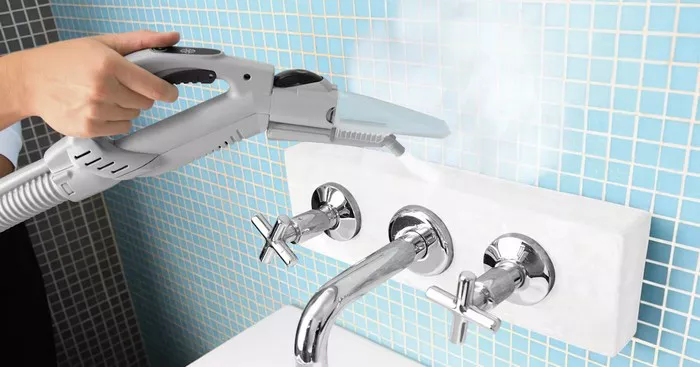Mold is a common problem in bathrooms, particularly in showers where moisture levels are consistently high. This fungus thrives in damp, warm environments, making your bathroom an ideal breeding ground. Mold not only affects the aesthetics of your bathroom but also poses significant health risks, including allergies, respiratory issues, and other adverse health effects. Therefore, addressing mold growth promptly and effectively is crucial.
One potential solution for mold removal in showers is steam cleaning. This method uses high-temperature steam to kill mold spores and clean affected areas. Steam cleaning is often touted as a chemical-free and environmentally friendly approach to tackle mold. However, understanding its effectiveness and limitations is essential before relying solely on this method for mold remediation in your shower.
Effectiveness of Steam Cleaning for Mold
Steam cleaning works by applying high-temperature steam directly to mold-infested surfaces. The heat from the steam can kill mold spores and some mold colonies. Typically, mold spores begin to die off at temperatures above 140 degrees Fahrenheit (60 degrees Celsius). Steam cleaners usually operate at temperatures ranging from 200 to 300 degrees Fahrenheit (93 to 149 degrees Celsius), which is sufficient to kill many types of mold and bacteria on contact.
Advantages of Steam Cleaning
Chemical-Free Cleaning: Steam cleaning does not require harsh chemicals, making it a safer option for households with children and pets.
Environmentally Friendly: Without the need for chemical cleaners, steam cleaning reduces the environmental impact associated with traditional mold removal methods.
Effectiveness Against Surface Mold: Steam can effectively kill surface-level mold and mildew, especially in grout lines and on tile surfaces.
See also: How Well Do Steam Cleaners Work
Limitations of Steam Cleaning
Despite its benefits, steam cleaning has several limitations when it comes to mold removal:
Ineffectiveness Against Deeply Embedded Mold: Steam cleaning might not penetrate deeply enough to kill mold that has infiltrated porous materials like drywall, wood, or deep into grout lines.
Not Suitable for Large Infestations: For extensive mold growth, steam cleaning alone may not be sufficient. Large infestations often require more comprehensive remediation strategies.
Difficulty Reaching All Crevices: Mold can hide in tiny cracks, behind tiles, or in other hard-to-reach areas where steam might not be able to penetrate effectively.
Potential for Moisture Residue: While steam evaporates quickly, it can leave behind moisture that, if not dried properly, may contribute to further mold growth.
Using a Steam Cleaner on Shower Mold
Safety Precautions
Before you begin steam cleaning mold in your shower, it’s important to take appropriate safety measures to protect yourself from mold spores and the steam itself:
Protective Gear: Wear gloves, a mask, and eye goggles to prevent direct contact with mold spores and to avoid inhaling them.
Proper Ventilation: Ensure the bathroom is well-ventilated to disperse mold spores released during cleaning and to allow steam to escape, preventing excess moisture buildup.
Steam Cleaning Technique
To maximize the effectiveness of steam cleaning for mold removal in showers, follow these steps:
Preparation: Clear the shower area of personal items, and vacuum or wipe down the area to remove loose debris and dust.
Attachment Selection: Use attachments designed for targeting mold in specific areas. For example, a small nozzle or brush attachment can be effective for cleaning grout lines and corners.
Steam Application: Hold the steam cleaner close to the moldy surface and apply steam continuously for several seconds. This ensures that the high temperature can penetrate the mold.
Consistent Movement: Move the steam cleaner slowly across the mold-infested area to maintain the temperature and kill the spores effectively.
Repeat if Necessary: For stubborn mold, multiple passes with the steam cleaner may be required.
Post-Cleaning Steps
After steam cleaning, it’s important to take additional steps to ensure the mold is thoroughly removed and to prevent future growth:
Wipe Down Surfaces: Use a disinfectant solution to wipe down all steamed areas. This helps remove any remaining mold spores and prevents regrowth.
Dry the Area: Ensure that all surfaces are thoroughly dried. Use a towel or a fan to speed up the drying process and eliminate any residual moisture.
Address Moisture Issues: Fix any sources of excess moisture in the bathroom. This might include repairing leaks, using a dehumidifier, or improving ventilation with an exhaust fan.
See also: Don’t Get Steamed: Surfaces to Avoid with Your Steam Cleaner
When to Consider Professional Help
While steam cleaning can be effective for minor mold problems, there are situations where professional help is necessary:
Extensive or Deeply Rooted Mold Growth: Large infestations or mold that has penetrated deeply into materials require professional remediation techniques to ensure complete removal.
Difficulty Identifying the Type of Mold: Some types of mold, like black mold (Stachybotrys chartarum), can be particularly hazardous. Professionals can identify the mold type and recommend appropriate removal methods.
Health Concerns: If you or anyone in your household has health conditions that could be exacerbated by mold exposure, it’s safer to consult with a professional.
Conclusion
Steam cleaning can be an effective method for removing minor mold problems in your shower. The high temperature of the steam can kill mold spores and clean the affected surfaces without the need for harsh chemicals. However, it’s important to understand the limitations of steam cleaning, especially when dealing with deeply embedded mold or large infestations.
To maximize the effectiveness of steam cleaning, follow proper techniques and safety precautions. After steaming, ensure the area is thoroughly dried and address any underlying moisture issues to prevent mold from returning.
For extensive mold growth, difficulties in identifying the mold type, or health concerns, seeking professional help is the best course of action. Mold can pose serious health risks, and professional remediation ensures that it is dealt with safely and effectively.
In conclusion, while steam cleaning is a valuable tool in the fight against mold, it should be used as part of a comprehensive approach to mold prevention and remediation. Addressing the root causes of moisture in your bathroom is essential to keep your shower mold-free in the long term.

